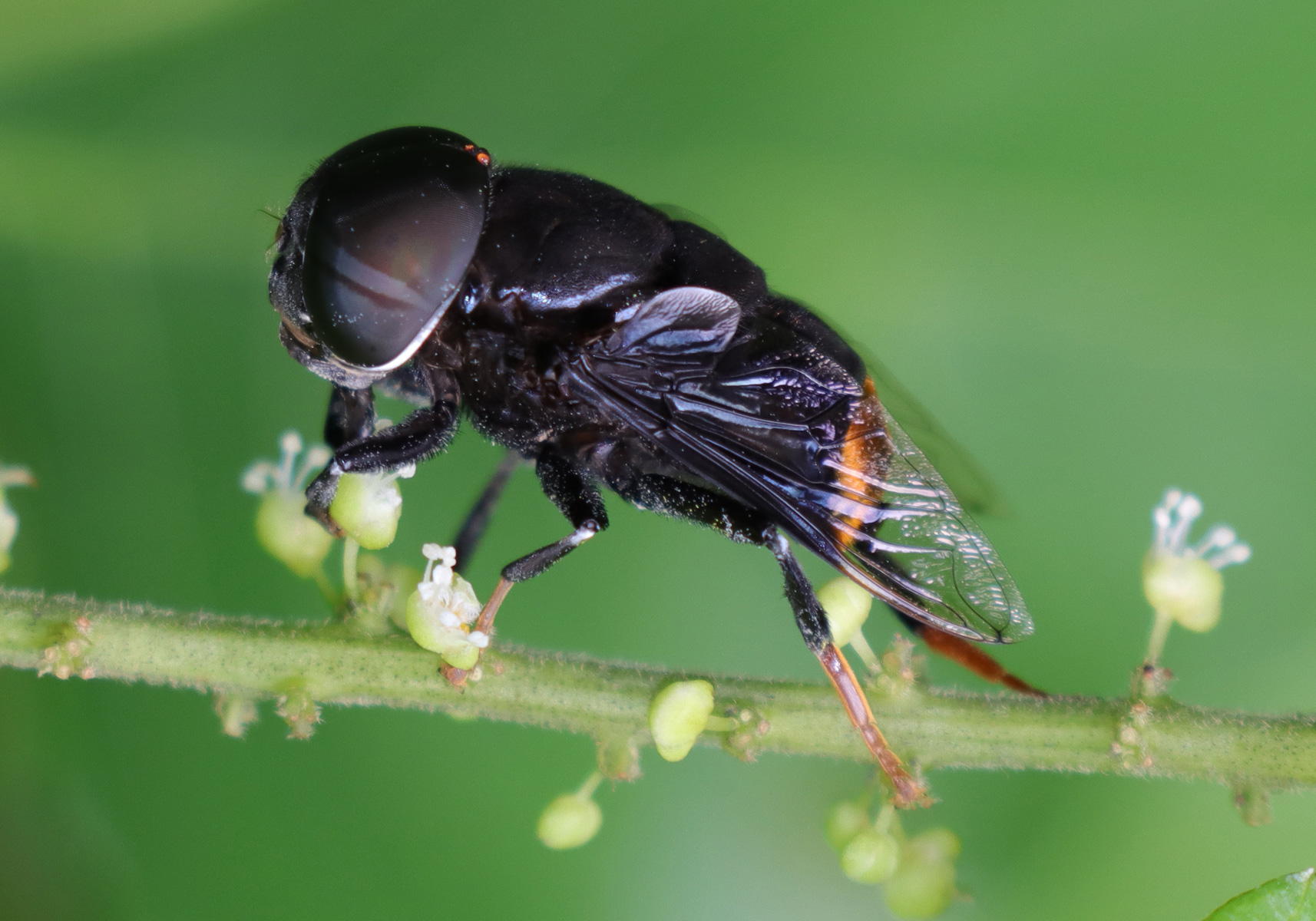Phytomia chrysopyga, commonly known as the Rat-tail Maggot Fly, belongs to the Syrphidae family, which is known for hoverflies. This species is distinct due to the rat-tail-like extension of its larval stage, which serves as a breathing tube in aquatic environments.
Rat-tail Maggot Flies
Phytomia chrysopyga
Home » Encyclopedia » Animals » Insects » Flies, Mosquito » Rat-tail Maggot Flies
Classification
KINGDOM
:
Animalia
PHYLUM
:
Arthropoda
CLASS
:
Insecta
ORDER
:
Diptera
FAMILY
:
Syrphidae
GENUS
:
Phytomia
SPECIES
:
Phytomia chrysopyga
Other Information
Venomous?
There is no poison associated with Rat-tail Maggot Flies; they are harmless to humans in terms of chemical defense.
A Danger to Humans?
These flies pose no danger to humans. Their larvae are often found in stagnant water or decaying organic matter, but they do not transmit diseases to humans.
Population Status
There are no specific studies detailing the population size of Phytomia chrysopyga, but they are not considered a rare species within their range.

Rat-tail Maggot Flies (Phytomia chrysopyga), photo by David Lowenthal
Life Span:
The entire lifecycle from egg to adult typically spans several weeks to a couple of months, depending on environmental conditions such as temperature and availability of food.
Weight and Length:
As a small fly, the adult Phytomia chrysopyga weighs only a few grams. Adults typically measure about 10-15 mm in length, not including the larval tail, which can extend several centimeters to facilitate breathing while submerged.
Distribution:
This species is found in various parts of Europe and Asia, particularly thriving in areas with abundant water sources and organic decay where larvae can develop.

Rat-tail Maggot Flies (Phytomia chrysopyga), photo by David Lowenthal,
Habits and Lifestyle:
Rat-tail Maggot Flies are primarily active during the day. The larvae are aquatic and live in stagnant, often oxygen-poor environments like sewage or decomposing organic matter, using their extended tails to breathe air from the surface.
Diet and Nutrition:
The larvae feed on decomposing organic materials in their aquatic environments, which helps in nutrient cycling and breakdown of organic matter. Adults typically feed on nectar and are sometimes seen around flowers.
Mating Habits:
Mating occurs shortly after maturation. Females lay eggs in stagnant or slow-moving water rich in organic materials, ensuring that emerging larvae have immediate access to food. This reproductive strategy aligns with the flies’ role in ecological nutrient recycling.
